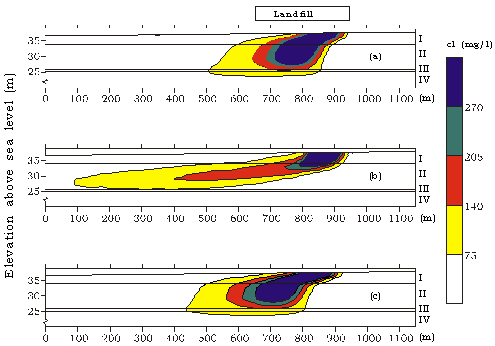


|

|
|
|
Concentration Data and Dimensionality in Groundwater Models: Evaluation Using Inverse Modeling
1. Groundwater Research Center, Technical University of Denmark
1998, Nordic Hydrology ABSTRACT A three-dimensional inverse groundwater flow and transport model that fits hydraulic-head and concentration data simultaneously using nonlinear regression is presented and applied to a layered sand and silt groundwater system beneath the Grindsted Landfill in Denmark. The aquifer is composed of rather homogeneous hydrogeologic layers. Two issues common to groundwater flow and transport modelling are investigated: (1) The accuracy of simulated concentrations in the case of calibration with head data alone; and (2) The advantages and disadvantages of using a two-dimensional cross-sectional model instead of a three-dimensional model to simulate contaminant transport when the source is at the land surface. Results show that using only hydraulic heads in the nonlinear regression a simulated plume is produced that is profoundly different from what is obtained in a calibration using both hydraulic-head and concentration data. The present study provides a well documented example of the differences that can occur. Representing the system as a two-dimensional cross-section resulted in a simulated plume for the calibration conditions that matched the actual plume almost as well as the three-dimensional model. The two-dimensional model execution times were about a seventh of those for the three-dimensional model, but two difficulties were encountered. First, the spatially variable source concentrations, which had been straightforward to represent in the three-dimensional model, is difficult to implement in the two-dimensional model. Second, more precise simulated concentrations were calculated in the three-dimensional model. This indicates that three-dimensional modelling should be preferred in the considered type of transport studies.
Figure 7 from the article: 
Plumes simulated using models with the following characteristices:
(a) Three-dimensional model calibrated with concentration data as well as hydraulic-head data
mchill@usgs.gov Last Modified: March 17, 1999 |